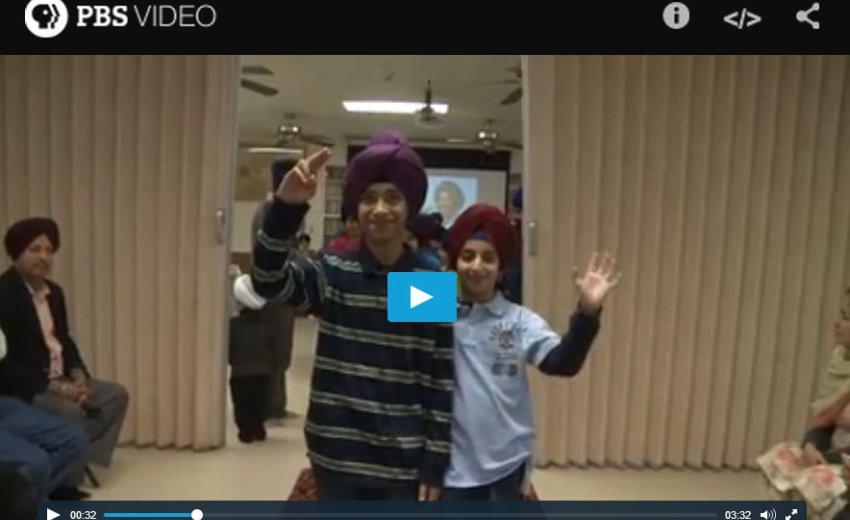| Sikh Turban Showdown |
|
|
March 14, 2014: In January, the Sikh Foundation of Virginia held a “Turban Showdown” for the pre-school children and older youth of its gurdwara in Northern Virginia. Parents helped the children wrap their turban or keski and then watched them walk down a runway. Youth and education coordinator Surinder Singh explained the meaning of the turban and why it is, for Sikhs, a mark of pride, respect, and responsibility. Video by Murray Pinczuk. Photographs by Sam Pinczuk. Interview by Missy Daniel. Edited by Fred Yi. |
|
READ TRANSCRIPT
SURINDER SINGH (Sikh Foundation of Virginia): Today we arranged a turban showdown. The idea behind it was to let the parents see their children in the turbans and, you know, how glorious they look, how eventually beautiful they become when they tie the turban on their head. Sometimes parents don’t know how to tie the turban on their children and, you know, they seek help from outside, so we’ve tried to bring the opportunity to them, that bring your children, we’ll dress them up, and they’ll walk on the runway and then you will see them, you know, with the turbans and you will get their pictures clicked. Traditionally speaking in India it used to be a kind of part of the life that when a father died the son took his place wherever he was in the life and then the turban was given to him as a part of responsibility that now you’re carrying the responsibility on your head. Similarly when gurus gave the guruship to the next guru, the next teacher, they also gifted a turban with it. The Guru’s teachings were that being as natural as possible, as, as we are born. Religiously we’re never supposed to cut our hair on any part of the body, It’s basically a lengthy, very soft cloth which becomes a turban and we kind of wrap it up a little bit in the beginning to make it more neater and then we start tying it one step at a time, it’s like one layer at a time. It’s a stretch cloth so it just kind of keeps it easy to tie it up neatly. Because our idea is that when you’re carrying something on your head it has to look good, it has to be clean, it has to be inspiring others. Women have not been participating that much, for a century or so I would say. They used to but it’s kind of becoming a less of a fashion and we’re trying to bring that back. We’re trying to encourage them as well to tie the turban just like men do all the time where they go. We’re not restricted in any color, that you cannot tie this color or you cannot tie this color on this occasion or something but again, colors do have significance. For example, white color is considered more like peaceful, you know, so when there’s a death in the family or you go for a death ceremony we try to tie lighter colors, not bright, vibrant colors, but again, on the opposite, too, when we go to weddings and all we try to tie, you know, the more vibrant bright red colors. We did have many situations in the schools where they were being bullied around for even tying the small, like the patka type, they do the small cloth they warp their head with nowadays when they go to school, but any type of turban or any type of head gear basically I would say they were being bullied for and we have talked to the school administrations, we have gone for to, you know, take our part, that okay, how we can educate these people? We can bring them out of that ignorance that this is a part of our religion. The pride I carry when I tie it on my head in the morning and I, you know, have to walk outside. I’m carrying myself like a king. I’m walking out of my door like I’ve some responsibility on my head today and I’m going somewhere to do something better with my life and that courage is, you know, that inspiration comes from my turban. It’s a mark of pride for us to carry the turban with us and it’s a mark of respect, it’s a mark of responsibility, so you want to see your child growing up and, you know, taking that responsibility. |
